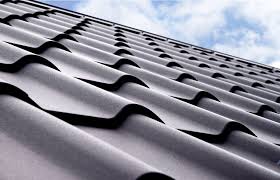Soundproofing a Metal Roof: Main Methods
If you are looking for a way to soundproof your metal roof, you have come to the right place. In this blog post, we will discuss three different ways that you can soundproof your metal roof: underlayment and ceiling insulation, attic insulation, and sound deadening paint. We will go over the pros and cons of each method, so that you can make an informed decision about which one is best for your needs. Let’s get started!

A Metal Roof for your house
There are a few things to consider when choosing a metal roof for your house. The first is the type of metal roof, each has its own benefits and drawbacks.
There are three main types of metal roofs:
- steel
- aluminum
- and copper.
Steel roofs are the most popular type of metal roof. They’re durable, low-maintenance, and fire-resistant. However, they can be very loud during a rainstorm or when high winds blow.
Aluminum roofs are a good choice if you live in an area with high winds. They’re also lightweight and easy to install. However, they’re not as durable as steel roofs and can dent easily.
Copper roofs are the most expensive option, but they’re also the most durable. Copper roofs will last for decades with proper maintenance. They’re also fire-resistant and have a natural patina that protects against weathering. However, copper roofs can be very loud during a rainstorm.
How to Soundproof a Metal Roof
If you’re concerned about noise from a metal roof, there are a few things you can do to soundproof it.
Roof Underlayment
One is to install an underlayment and ceiling insulation. This will help to deaden the sound of raindrops hitting the roof.
The roof underlayment is a water-resistant barrier that is put directly on your roof deck, generally made of nylon filaments and foam insulating panels to keep heat inside your house while removing any contaminants.
An official underlayment must be laid before a metal roof can be installed. The addition of this layer to your roof will significantly lower the amount of noise generated by the metal being exposed to the elements.
Attic Insulation
If you don’t have a ceiling cavity, make a fake ceiling to help soundproof your metal roof. Foam insulation (panels or spray) should then be installed and the soundproof ceiling tiles should be put on top.
A higher density barrier separating your roofing and your attic will essentially cut down the noise pollution created by a metal roof.
Sound reduction is achieved in a variety of ways, one of which is to install insulation. This is something that should ideally be done after the fact because it isn’t necessary when a roof is built with the appropriate type of roof underlayment from the start.
Having a large quantity of well-installed attic insulation is, without a doubt, the most highly regarded and cost-effective method of reducing harsh clanging noises from your metal roof.
Typically, the making of these noises is caused by harsh weather reverberating against the metal, such as torrential rain and hail.
Main attic insulation types are:
- Spray Foam
- Blanket Insulation
- Loose-Fill Insulation
- Rigid Foam Board Insulation
Spray Foam
Spray foam is a type of insulation that is sprayed onto surfaces. It expands and hardens to form a barrier that helps to prevent heat loss. Spray foam is Often used on roofs and in attics to help reduce energy costs. It can also be used to soundproof a room by blocking out noise from outside.
Blanket insulation
Blanket insulation is another type of insulation that can be used in attics and walls. It comes in rolls or batts and is made from different materials, such as fiberglass, wool, or cotton. Blanket insulation can be effective at reducing noise levels by absorbing sound waves.
Loose-fill insulation
Loose-fill insulation is made up of small pieces of material, such as cellulose or fiberglass. It is poured or blown into spaces and can be effective at soundproofing a room by filling in gaps and crevices that allow noise to enter.
Rigid foam board insulation
Rigid foam board insulation is made from rigid panels of insulation that are cut to fit between the studs in a wall. It can be used to insulate an entire room or just one wall. Rigid foam board insulation can help to reduce noise levels by absorbing sound waves.
No matter which type of attic insulation you choose, make sure it is installed properly in order to achieve the best results.
You can also use sound deadening paint on your metal roof to help reduce noise levels. This type of paint is specially formulated to absorb sound waves and improve soundprofing.
Sound Deadening Paint
Another effective soundproofing method is to use a sound deadening paint on the underside of your roof. This will help to absorb the noise and make your roof quieter. There are a few different brands of sound deadening paint, so be sure to do some research to find the one that best suits your needs.
In Conclusions
There are a few different methods that you can use to soundproof your metal roof. The most effective method is to use attic insulation, which will help to reduce the noise levels by absorbing sound waves. You can also use sound deadening paint on the underside of your roof to help reduce noise levels. Be sure to do some research to find the best products for your needs.
underlayment and ceiling insulation are two ways you can create a more peaceful household if your metal roof is causing too much racket for comfort. A higher-density barrier between your roofing and attic will significantly lower the amount of noise generated by weather conditions or other outside forces hitting the metal surface. Adding insulation after installation is another cost-effective measure in